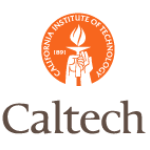- Branche:
- Number of terms: 3726
- Number of blossaries: 0
- Company Profile:
Controlling the shape of a telescope mirror at a relatively slow rate.
Industry:Astronomy
Art of bringing parts of the universe to the perfect state toward which they were thought to aspire - e.g., gold for metals, immortality for human beings.
Industry:Astronomy
A form of mounting similar to that of a radar which allows the telescope tube to be moved horizontally (by rotation in azimuth or compass direction) and vertically (by rotation in altitude or elevation). To follow a star the telescope must be adjusted simultaneously in both axes. (also called alt-az.)
Industry:Astronomy
1) The direction of the sky opposite to that of the galactic center.
2) The point in the galactic plane that lies directly opposite the galactic center. Here we gaze toward the edge of the Galactic disk. The nearest bright star to the anticenter is El Nath, in the constellation Taurus.
Industry:Astronomy
The point in a planetary orbit that is at the greatest distance from the Sun.
Industry:Astronomy
Rotation of the line of apsides in the plane of the orbit; (in a binary) precession of the line of apsides due to mutual tidal distortion.
Industry:Astronomy
colourless, odourless gas comprising 1% of the atmosphere
Industry:Astronomy
Also called planetoids or minor planets, the asteroids are tiny planets most of which orbit the Sun between Mars and Jupiter. The largest - and the first discovered - is Ceres, with a diameter of 1,003 km. It is estimated that there may altogether be no fewer than 40000. A few have very elliptical orbits and cross the orbits of several other (major) planets. One or two even have their own satellites (moons.)
Industry:Astronomy
